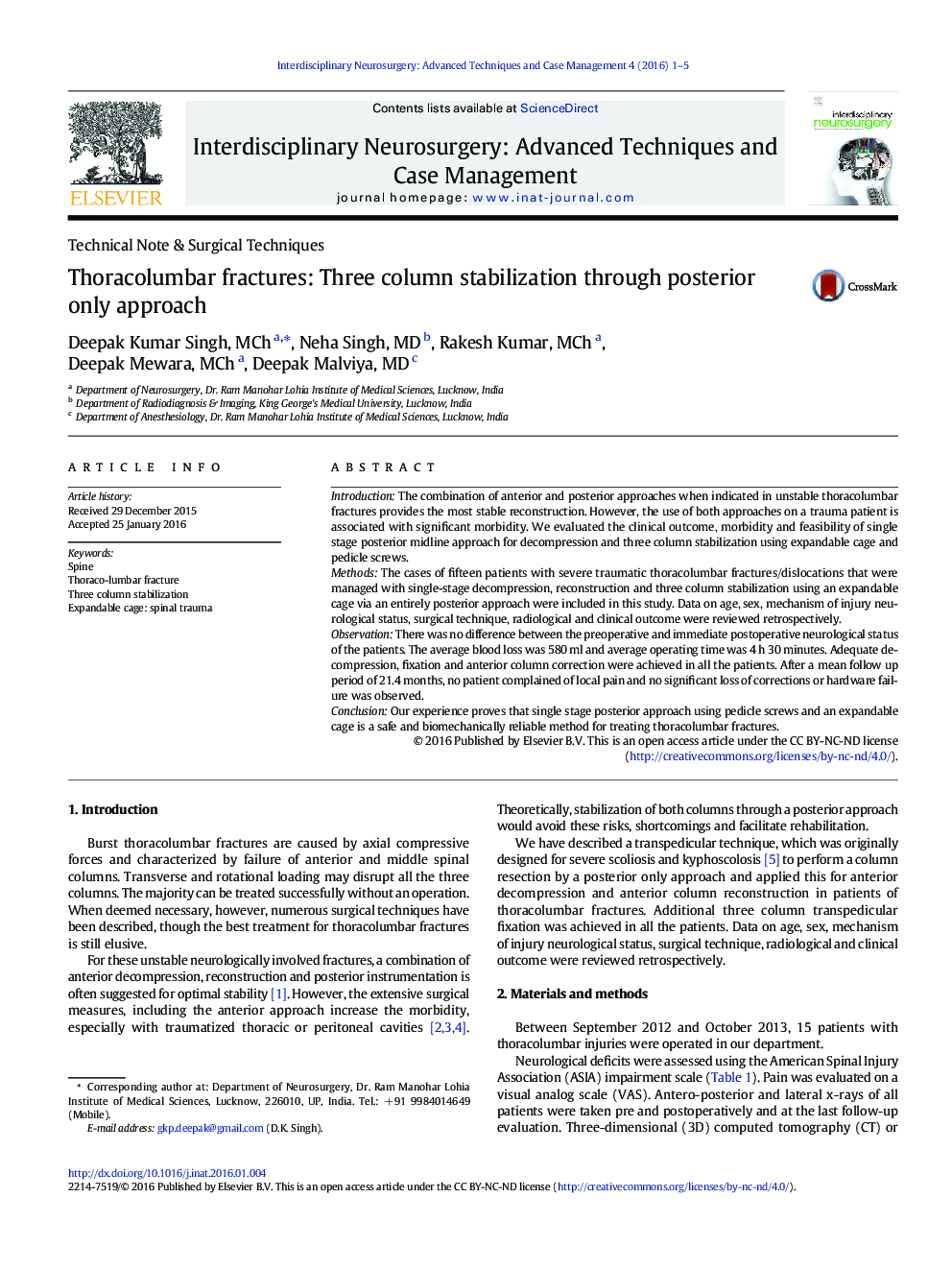| Article ID | Journal | Published Year | Pages | File Type |
|---|---|---|---|---|
| 3057729 | Interdisciplinary Neurosurgery | 2016 | 5 Pages |
IntroductionThe combination of anterior and posterior approaches when indicated in unstable thoracolumbar fractures provides the most stable reconstruction. However, the use of both approaches on a trauma patient is associated with significant morbidity. We evaluated the clinical outcome, morbidity and feasibility of single stage posterior midline approach for decompression and three column stabilization using expandable cage and pedicle screws.MethodsThe cases of fifteen patients with severe traumatic thoracolumbar fractures/dislocations that were managed with single-stage decompression, reconstruction and three column stabilization using an expandable cage via an entirely posterior approach were included in this study. Data on age, sex, mechanism of injury neurological status, surgical technique, radiological and clinical outcome were reviewed retrospectively.ObservationThere was no difference between the preoperative and immediate postoperative neurological status of the patients. The average blood loss was 580 ml and average operating time was 4 h 30 minutes. Adequate decompression, fixation and anterior column correction were achieved in all the patients. After a mean follow up period of 21.4 months, no patient complained of local pain and no significant loss of corrections or hardware failure was observed.ConclusionOur experience proves that single stage posterior approach using pedicle screws and an expandable cage is a safe and biomechanically reliable method for treating thoracolumbar fractures.
